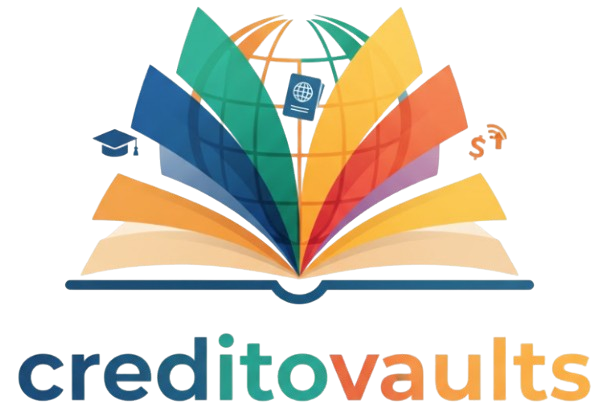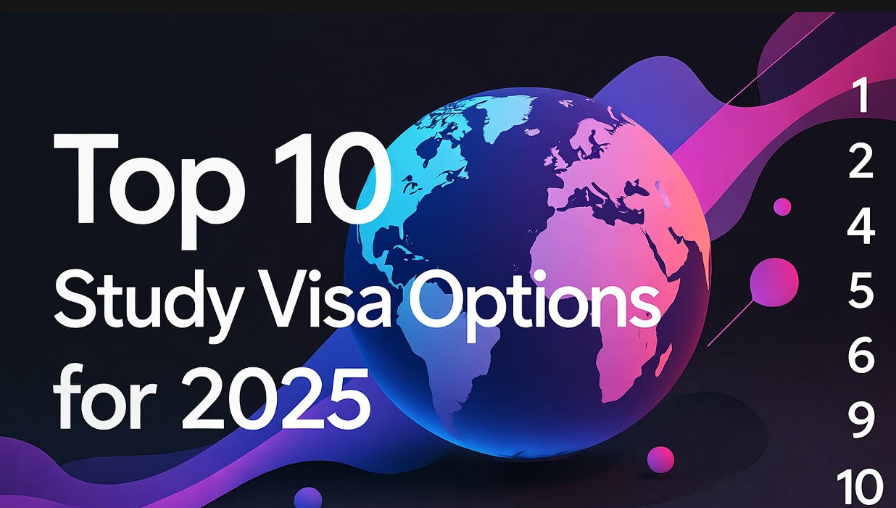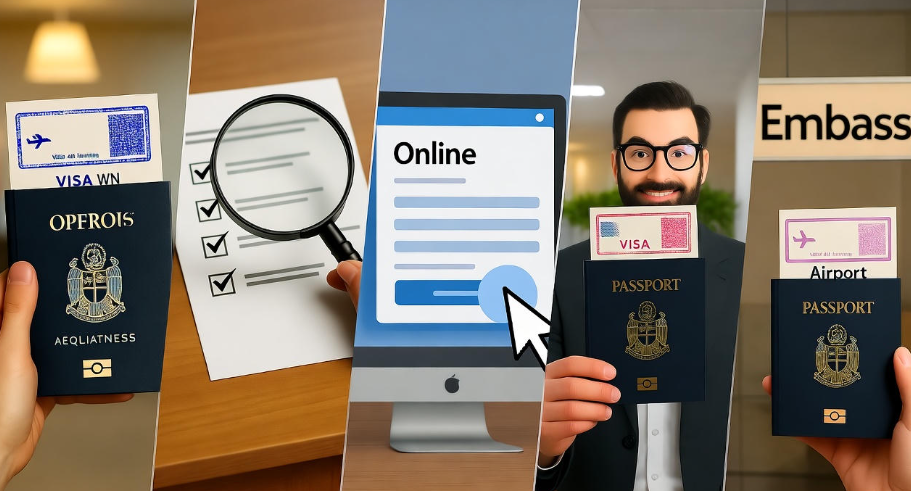If you’re planning to study abroad, one of the most crucial steps in your visa process is proving financial support.
It’s basically the immigration officer’s way of making sure you can afford your tuition fees, living expenses, and other costs during your study period. Think of it like showing proof that you won’t struggle financially once you land in a new country.
Many students underestimate this part, but honestly, it can make or break your visa approval. So, let’s dive in — in simple words — and see how you can prove your financial support confidently and correctly.
Why financial proof matters
When you apply for a study visa, the embassy wants to be sure you’re not going abroad to find work illegally or become financially dependent on the host country.
They want assurance that your main purpose is education, not employment.
So, financial proof helps them trust that you can pay for your studies, accommodation, travel, and daily needs without relying on government aid.
Think of it this way — if you can show strong, clear financial backing, your visa officer will likely think, “Okay, this student is serious, responsible, and well-prepared.” ✅
Types of acceptable financial proof
Every country has slightly different requirements, but most embassies accept similar kinds of documents. Here’s a quick look at common financial proofs:
| Type of Financial Proof | Accepted As Evidence? | Details / Tips |
|---|---|---|
| Bank statements | ✅ Yes | Must show enough balance to cover at least one year of tuition + living costs. |
| Proof of scholarship | ✅ Yes | Official scholarship letter mentioning total amount and coverage duration. |
| Sponsor’s letter + bank proof | ✅ Yes | Letter from your sponsor (parent/guardian) confirming financial support. |
| Loan approval letter | ✅ Yes | From a recognized bank showing approved amount and purpose. |
| Fixed deposit certificates | ✅ Sometimes | Should be easily withdrawable. Some embassies may not accept long-term locked deposits. |
| Income tax returns (ITR) | ⚙️ Optional | Shows your or sponsor’s financial stability. |
| Affidavit of support | ✅ Yes | Legally sworn statement confirming sponsorship responsibility. |
How much money do you need to show?
The required amount depends on your destination country and the length of your course. Below is a rough idea:
| Country | Approx. Minimum Funds Required (Per Year) | Includes |
|---|---|---|
| Canada | CAD 20,000 – 25,000 | Tuition + living expenses |
| UK | GBP 15,000 – 20,000 | Tuition + accommodation |
| USA | USD 25,000 – 35,000 | Tuition + personal costs |
| Australia | AUD 24,000 – 30,000 | Tuition + living |
| Germany | EUR 11,208 (blocked account) | Living costs |
| New Zealand | NZD 20,000 – 25,000 | Tuition + living |
Always check your embassy’s official website for the latest financial requirements because they can change yearly.
Bank statements — what to keep in mind
Your bank statement is often the most important document.
Here’s what you should ensure before submission:
-
The statement should be at least 3 to 6 months old (recent).
-
It should show a stable balance, not sudden deposits before the visa.
-
It must be on the bank’s official letterhead, stamped, and signed.
-
The account should ideally be in your or your sponsor’s name.
Tip: Embassies sometimes get suspicious if your account suddenly gets large deposits right before you apply. So, plan your financials early and keep your balance steady for months.
Using a sponsor for financial support
Not every student can afford the full amount on their own — and that’s completely fine.
Most students are supported by their parents, relatives, or family sponsors.
If you’re using a sponsor, make sure to include:
-
Sponsor letter: A short, clear letter saying your sponsor agrees to cover your educational and living costs abroad.
-
Relationship proof: Birth certificate, family registration, or legal documents showing how you’re related.
-
Sponsor’s bank statement: Showing the amount that covers tuition and living expenses.
-
Income proof: Job letter, tax records, or salary slips showing financial stability.
Important: The more transparent and consistent the sponsor’s documents are, the stronger your case becomes.
Scholarships and funding letters
If you’ve earned a scholarship — congratulations! That’s one of the strongest proofs of financial support.
To make it count, you must include an official scholarship letter that mentions:
-
The name of the scholarship.
-
Total amount awarded.
-
Duration or coverage period.
-
What expenses it covers (tuition, living, travel, etc.).
Even if the scholarship covers only partial expenses, you’ll still need to show proof of funds for the remaining amount.
Education loan as proof
Another valid option is taking an education loan from a recognized bank or institution.
Most embassies accept loan approval letters as proof, provided they clearly mention:
-
The total amount approved.
-
The purpose (study abroad).
-
The repayment terms and your name.
-
The bank’s signature and stamp.
If possible, include a loan disbursement schedule or guarantor information — this shows seriousness and financial planning.
Affidavit of support — what it really means
An affidavit of support is a sworn legal statement, signed by your sponsor, confirming that they will financially support you during your studies.
It’s usually notarized and includes:
-
Sponsor’s name, occupation, and contact details.
-
Your name and relationship with the sponsor.
-
A clear declaration of financial responsibility.
It’s a small document but holds big value — it makes your financial promise official and trustworthy.
The blocked account system (for countries like Germany )
Germany and some European countries require international students to open a blocked account, also called a Sperrkonto.
This account holds a fixed amount (around €11,208 for one year), which proves you have enough funds to cover living costs.
Each month, you can withdraw only a limited amount (around €934 per month).
This method is considered the safest and most reliable proof of financial support in Germany.
Common mistakes students make
Let’s be real — many students face rejection just because of minor financial proof mistakes.
Here are the most common ones (and how to avoid them):
| Mistake | Why it’s a Problem | How to Fix It |
|---|---|---|
| Submitting fake or unclear bank statements | Visa officers verify authenticity. | Always use genuine, verifiable documents. |
| Sudden large deposits before applying | Seems suspicious. | Maintain funds for at least 3–6 months. |
| Missing sponsor relationship proof | Embassy can’t verify connection. | Add birth certificate or legal document. |
| No translation of financial docs | Non-English documents may be rejected. | Use certified translation if required. |
| Insufficient funds shown | Leads to automatic rejection. | Always show slightly more than the minimum. |
Simple checklist before submitting financial documents
Here’s a small checklist to make sure your financial proof is complete:
✅ Bank statements (last 6 months)
✅ Tuition fee receipt or invoice
✅ Proof of accommodation or rent estimate
✅ Sponsor letter (if applicable)
✅ Scholarship or loan letter
✅ Income tax return (optional but helpful)
✅ Affidavit of support (if sponsored)
✅ Translated copies (if documents not in English)
If you tick all these boxes, your financial section is strong enough to impress the visa officer!
Some extra tips to strengthen your case
-
Keep your documents organized and labeled — visa officers appreciate clarity.
-
Avoid conflicting information (like saying your father is a sponsor in one form and your uncle in another).
-
Make sure your bank name, address, and contact are clearly visible on documents.
-
Always double-check currency conversions. Show equivalent value in the local currency of the destination country.
-
Add a cover letter summarizing your financial situation — it helps give context to your documents.
A quick example of financial summary (for visa file)
| Expense Category | Estimated Cost (1 Year) | Proof Attached |
|---|---|---|
| Tuition Fee | $18,000 | Fee receipt + admission letter |
| Living Expenses | $12,000 | Bank statement |
| Accommodation | $6,000 | Rent estimate + sponsor letter |
| Travel + Insurance | $3,000 | Bank balance proof |
| Total Funds Shown | $39,000 | — |
This kind of small table gives a clear picture and helps the officer see your planning at a glance.
Real-life tip
Sometimes students panic thinking they don’t have “enough” money to show.
But remember, presentation matters as much as the amount.
If your documents are clean, well-labeled, and easy to verify, your case becomes stronger — even with modest funds.
So, focus on being clear, honest, and organized instead of just showing huge numbers.

Frequently Asked Questions (FAQs)
Q1: Can I show multiple bank accounts for my study visa?
Yes, you can show more than one account. Just make sure all accounts belong to you or your sponsor, and clearly mention each account’s purpose.
Q2: What if my funds are in a foreign currency?
You can submit the statement in that currency, but mention the equivalent in the visa country’s currency (use official exchange rates from a bank).
Q3: Do embassies call the bank to verify funds?
Sometimes yes. Especially if something seems unclear or suspicious. That’s why it’s safer to use official statements and avoid fake documents.
Q4: Can my uncle or friend sponsor me?
In some countries, yes. But embassies prefer immediate family members. If it’s a friend or distant relative, make sure to include strong relationship proof and a notarized affidavit.
Q5: How long should I maintain the funds before applying?
Ideally, maintain the funds in your or your sponsor’s account for at least 3–6 months before the visa interview.
Final Thoughts
Proving financial support for a study visa isn’t just about showing numbers in your account. It’s about showing responsibility, planning, and honesty.
When the visa officer looks at your documents, they should feel confident that you’ve got everything under control — from tuition to travel.
So, prepare early, stay consistent, and present your financials clearly.
Remember: Clarity + Authenticity = Approval ✅
And once you’ve got that visa stamp on your passport, all the hard work will feel worth it. ✈️




